“Fresh undies, same clothes as yesterday” is one approach when you are on the road. Fran and Conal bit the bullet and decided a visit to the laundry in Ennistymon was necessary – luckily there a tourist attraction nearby.
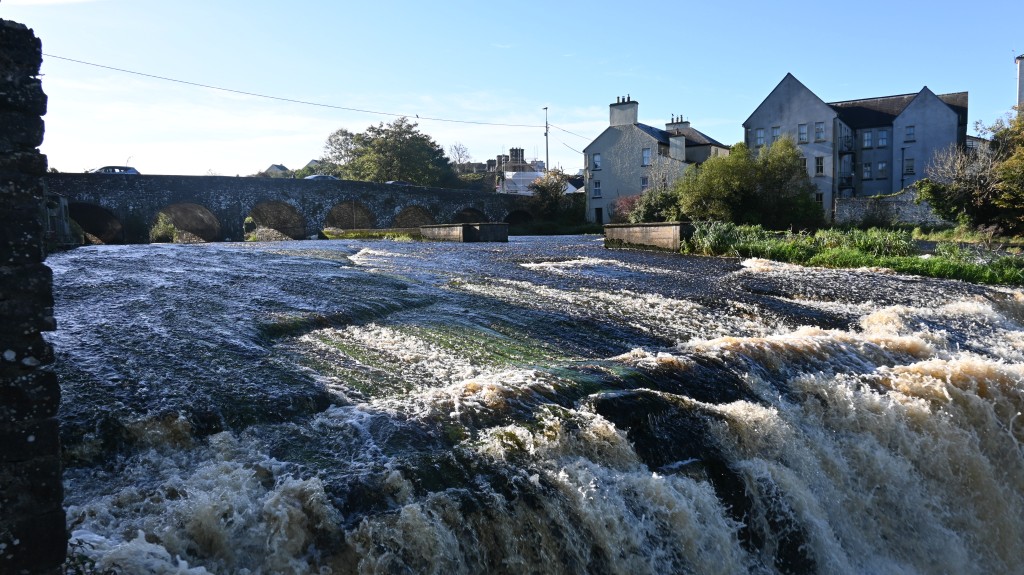
By CONAL HEALY
Thursday, October 12, 2023 (11am): One of the challenges with our kind of holiday is the laundry. What do you do with your dirty clothing? How many days can you wear the same outfit? You can adopt the approach: “Fresh undies, same clothes as yesterday”. This works, until the clothes get really dirty, or wet. Or both.
Fran and I had managed to dry out the steaming bag of laundry that came out of the washing/drying machine in Dublin – we hung them out on the radiator heaters at the Lahinch Airbnb. There was still a pile of clothes that needed a wash.
We found a laundry nearby, in Ennistymon, that would wash and dry the clothes, after our sojourn at the Cliffs of Moher, Fran and I set off with our bags of washing.
Ennistymon is a beautiful, historic market town, located on the banks of the River Cullenagh. Population: 1000.
While Ennistymon is the town’s official name, it’s more commonly spelled Ennistimon (There are road signs with both spellings).
The name is said to be derived from Inis Diomáin in Gaelic, which translates to ‘Diomán’s island’. However, the more common translation is the arguably more fitting, ‘Diomán’s river meadow’.
Ennistymon is a thriving Irish market town, with a bustling local economy. Numerous independent shops line the streets, each decorated in a way that stays true to the history of the town. It’s a pleasant town to wander around.
Having lived in the west of Ireland for three years (1980-1983), the main street of Ennistymon sparked memories from my past. There were cement two- and three-story houses, with small shops on the ground floor.
The town is hilly and the streets are narrow, well suited to a stroll.
Ennistymon is sometimes overlooked by most visitors in the rush to nearby Lahinch. This is a real shame as the town is remarkably endearing. The history of the town is relatively short, it was established as a town only in 1588.
A local facebook group says the “Lahinch Rush” has left been left Ennistymon “to its own devices, resulting in many unchanged traditional shopfronts and a merciful lack of fast-food joints and entertainment arcades created for the bulk tourist trade.”
That is not to say the town is unfriendly to tourists – there was a pub with a signpost saying how it featured in the popular Irish comedy, Father Ted. And there are plenty of other sights to see.
To me, the highlight of Ennistymon is The Cascades. These are a series of small waterfalls/rapids (fed by a the River Inagh) that act like a backdrop to the town’s main streets.
The cascades are quite a sight after heavy rain when they surge, beer-brown foaming, and you risk getting drenched on windy days in the flying drizzle according to Lonely Planet. Beyond the cascades, a pretty riverside walk takes you beyond the Falls Hotel, before looping back to the main street.
Fran and I were in a town still recovering from months of rain so the cascades were at full bore. And a sight to behold. The foaming river sparkled in the bright sunshine of late autumn in Ireland.
We got in a morning walk, got back to the car, dropped our washing into the laundry and set off to explore another world that lay just over the hill.
SNAPSHOT OF ENNISTYMON
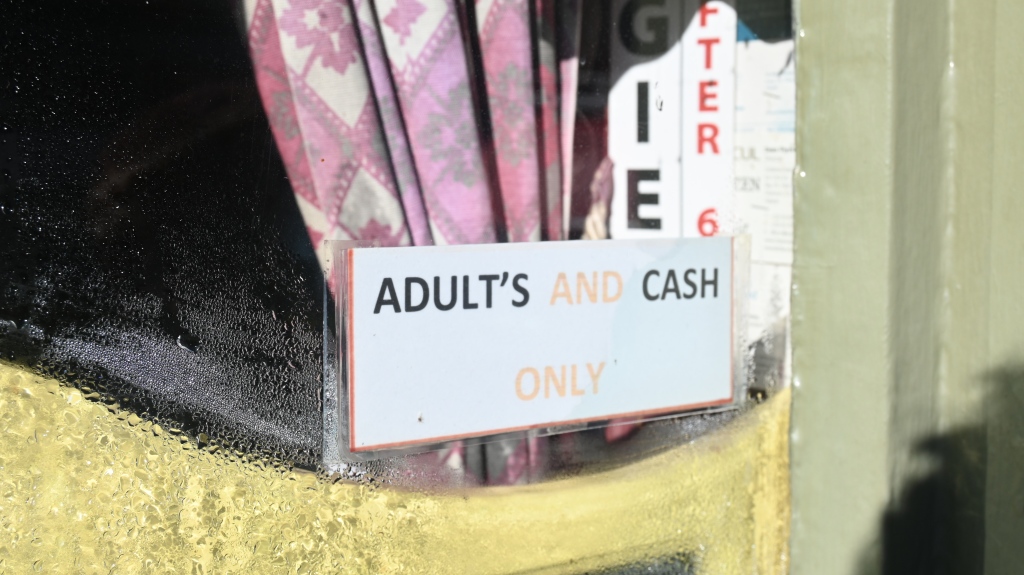
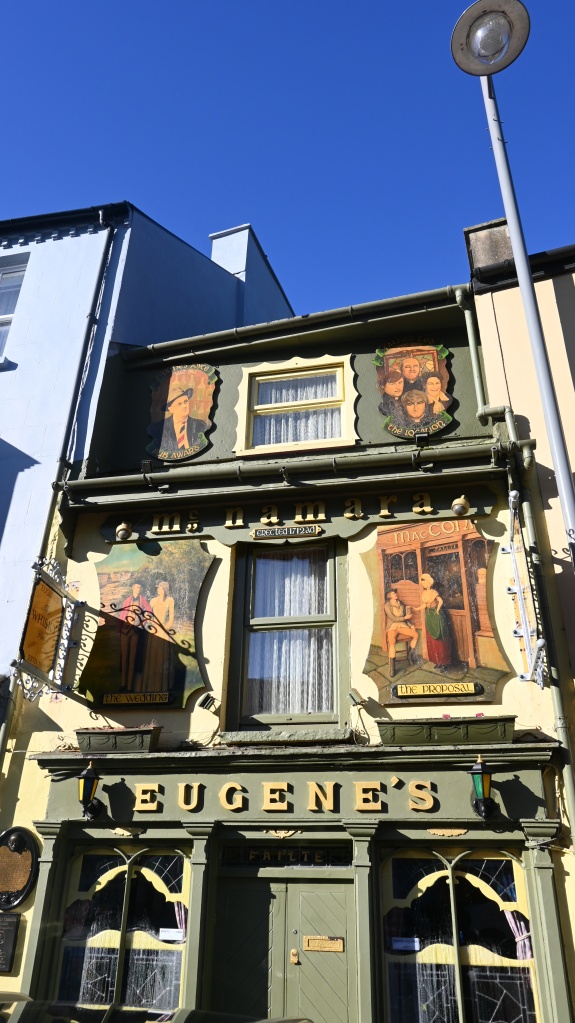


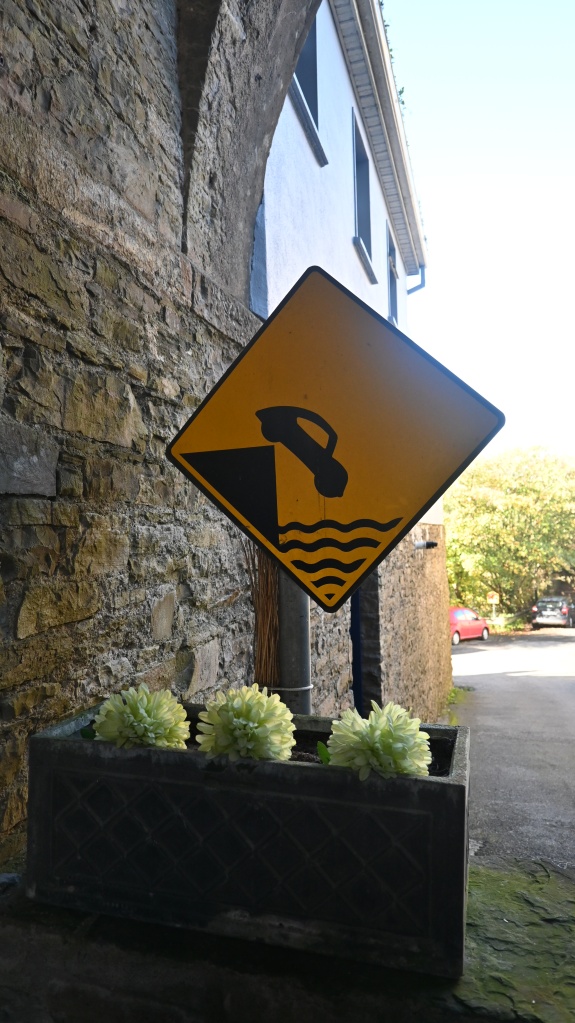

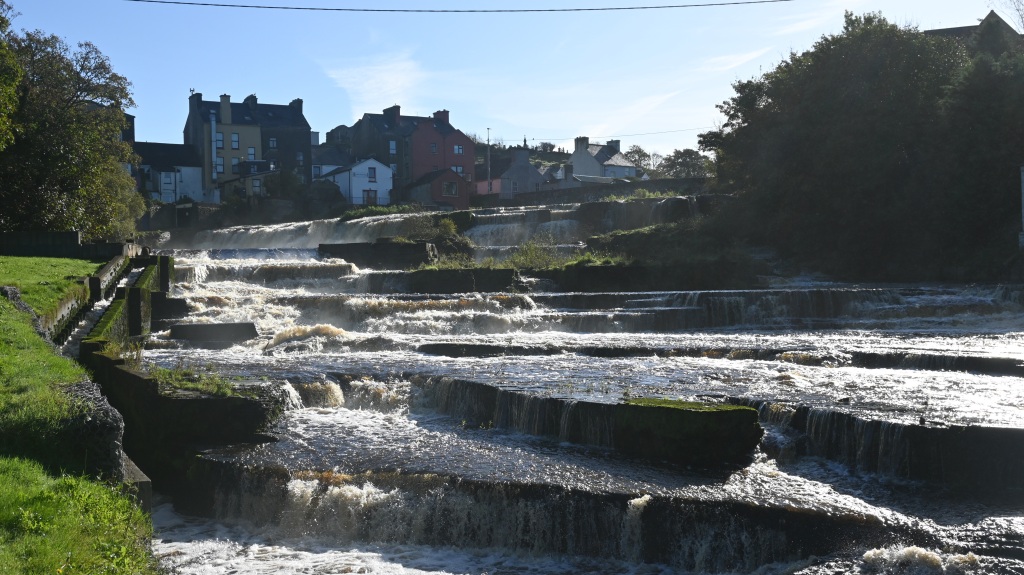
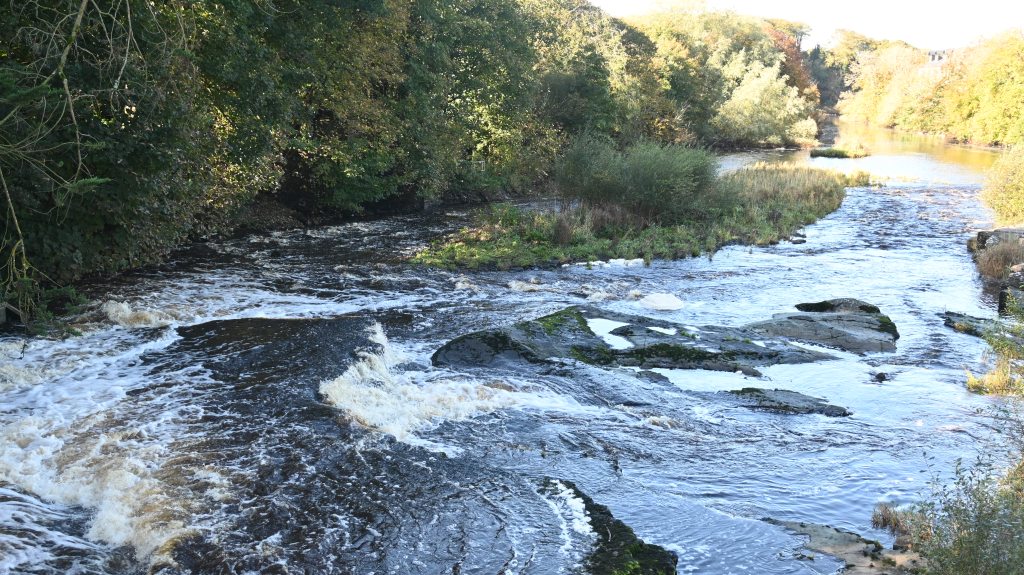
Ennistymon: History snapshot
Ennistymon grew from just three cabins in 1775 to 120 houses in 1810 (70 of which were slated). The oldest part of town is the narrow street near the bridge.
The town was hit hard during the Great Famine from 1845 to 1850. A workhouse was built to accommodate the poor and destitute.
The Ennistymon workhouse was built to accommodate 870 inmates. However, in 1847 the average number of inmates per month was 600 and the number of deaths 961. By 1850 there were over 2500 people in the various workhouses of the Ennistymon Union. Between 1847 and 1851 almost 5000 people had died, many of cholera.
Leave a comment